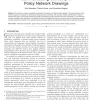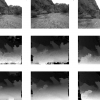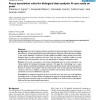917 search results - page 84 / 184 » Comparison of Data Structures for Computing Formal Concepts |
SC
2003
ACM
15 years 3 months ago
2003
ACM
The growing processor/memory performance gap causes the performance of many codes to be limited by memory accesses. If known to exist in an application, strided memory accesses fo...
GD
1999
Springer
15 years 2 months ago
1999
Springer
—We introduce a network visualization technique that supports an analytical method applied in the social sciences. Policy network analysis is an approach to study policy making s...
114
click to vote
CVPR
2009
IEEE
16 years 5 months ago
2009
IEEE
Spatiotemporal stereo is concerned with recovery of the 3D structure of a
dynamically changing scene from a sequence of stereo images. This paper
aims at computing temporally coh...
BMCBI
2008
14 years 10 months ago
2008
Background: Last years' mapping of diverse genomes has generated huge amounts of biological data which are currently dispersed through many databases. Integration of the info...
126
click to vote
SEBD
2003
14 years 11 months ago
2003
The Ambient Logic is a modal logic proposed to describe the structural and computational properties of distributed and mobile computations. The static part of the Ambient Logic is,...



